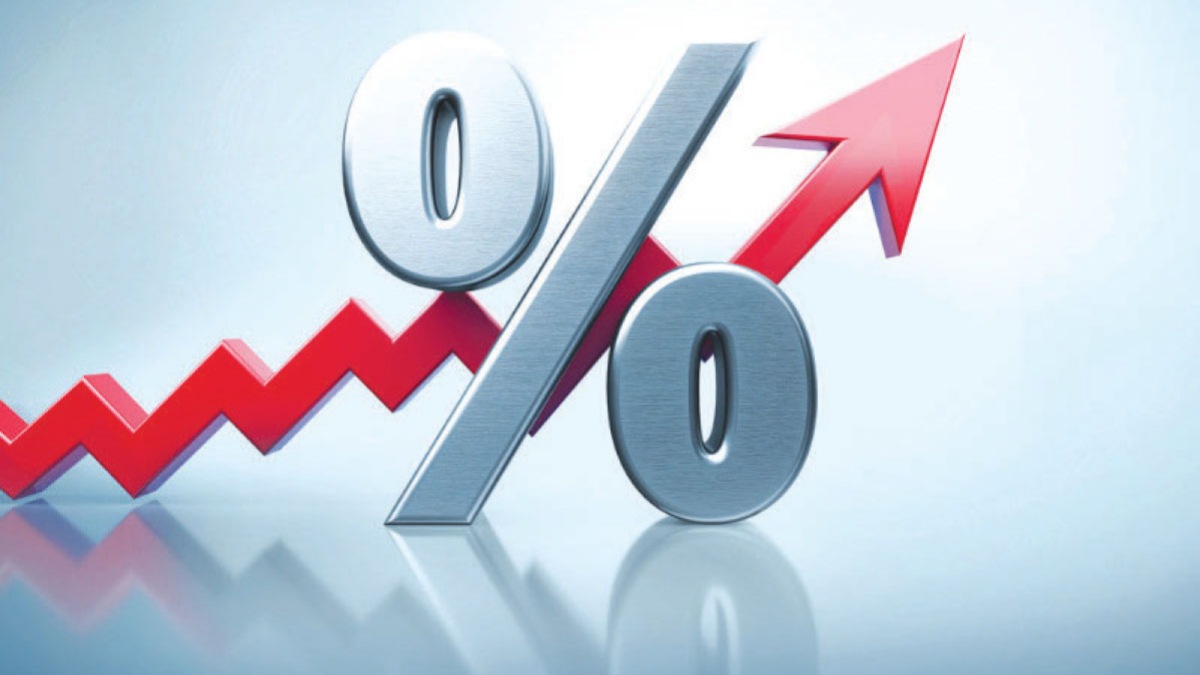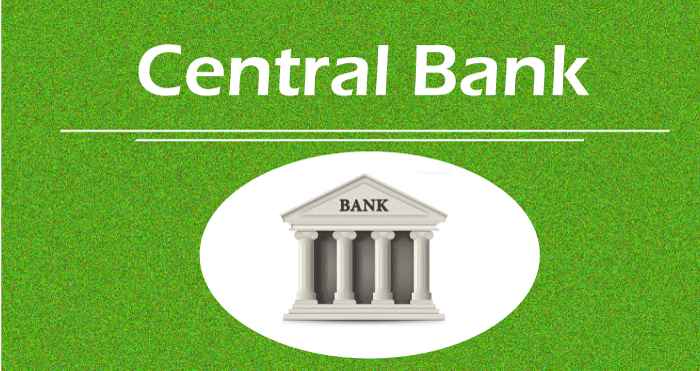When Central bank interest rates impact our day-to-day lives, many of us shrug it off – a mistake! Think about your last shopping trip or glance at your bank statement. Those numbers aren’t random. They dance to the tunes of central banks’ interest rate decisions. Those tiny percentage changes affect how much you spend, save, or pay on loans. Sound complicated? Don’t worry. I’ll walk you through the maze of rates and reveal how they tweak your financial health. Get ready to grasp how your wallet feels every shift and, most importantly, how to stay ahead.
Understanding Central Bank Interest Rate Decisions and Your Finances
The Role of Central Banks in Economic Stability
Imagine central banks as captains of giant ships, navigating through stormy seas. Their job is to keep the economy steady. When waters are rough—inflation goes up, or growth slows—they adjust the wheel. How? They change interest rates. These changes can help control how fast we spend or save money.
Personal Finance in the Wake of Interest Rate Adjustments
Now, let’s talk about your wallet. When central banks mess with rates, it’s like a wave that moves through the whole ocean. It knocks on every door and tugs at every purse string. Here’s the lowdown:
Big words first, if the federal reserve policy impact goes up, it usually means borrowing gets pricier. Your loans and credit card APR might swell. That can make you think twice before buying that new bike or TV.
But there’s a bright side. European Central Bank rate effects, for example, can do the opposite. If they lower rates, loans could get cheaper. Your money doesn’t stretch as thin. It’s easier to catch a break and keep your cash flowing, even when times are tough.
And if you’re a saver, watch out for saving accounts yields changes. Higher rates can mean your piggy bank gets fatter without extra work. It’s like planting a money tree and watching it grow faster.
Got a home or planning to buy one? Changes in mortgage rates central bank style can mean a lot. If rates hike, your dream home’s mortgage payments might put more heat on your budget. But if they cut rates, you could end up with spare cash to paint the living room.
Employment rates can hitch a ride too. With sound monetary policy outcomes, folks might find more jobs on offer. That’s because businesses can borrow at lower rates to grow and hire. See, every rate change sends ripples through your life and the economy.
Speaking of ripples, how about your long-term goals? If plans include setting up shop or a cozy retirement, park an eye on policy rates business planning. They can decide if it’s party or patience in your future endeavors.
So, here’s the skinny. Central banks use these interest levers to keep the economic ship sailing smooth. And while they’re tinkering with the controls, sometimes it’s sunshine, and sometimes it’s rain for your finances.
Keep your head up. With each change, you can make smart moves. Cut back a bit here, save a touch there. And if you’ve got debt, understanding rate changes is like finding a treasure map. It guides you through the safest path to being debt-free.
Remember, central banks don’t just flip switches for fun. They’re trying to keep everything balanced – from big bank stuff down to your everyday budget. So when you hear about interest rate hikes economy-wide, don’t just ride the wave. Get on your surfboard and show those waves who’s boss.
The Ripple Effect of Interest Rate Hikes on the Economy and Inflation
Analyzing the Impact on Consumer Spending and Savings
You might feel it every time you shop or check your bank account. When central banks boost rates, your wallet knows. Let’s say the federal reserve ups the interest rate. This makes borrowing cost more. Banks raise rates on loans and credit cards. You think twice about that new car or big TV. You choose to save instead of spend. This is the federal reserve policy impact.
Your savings account may earn more interest now. Saving sounds good, right? But there’s a catch. Everyone else saves more too. Businesses invest less, so they hire fewer people. Jobs are harder to get, and the economy doesn’t grow so fast. These are the monetary policy outcomes affecting us all.
Inflation Control Measures Amid Rising Rates
Now, why hike rates at all? It’s all about taming inflation – when prices go sky high. With high rates, people spend less. Less spending means prices may stop rising too fast. This is one of the inflation control measures at work.
Europe or England, the idea is the same. The European Central Bank or the Bank of England raises rates, expecting you to guard your cash. When we all buy less, demand drops, and prices stabilize. Your money doesn’t lose value as quick as before. This is fiat currency value stability in action.
But it’s a balancing act. Make credit too costly, and you risk tipping us into recession. The goal is to cool off the economy just enough. It’s like turning down the stove to keep the soup from boiling over, without letting it go cold.
Central banks watch this dance closely. They fine-tune rates to keep inflation in check while letting growth hum along. This takes skill, patience, and lots of data. It’s central banking strategy in real time.
Next time you hear about a rate hike, you’ll understand the ripples it sends. Your choice to save or spend, the job market, and how far your cash goes – they’re all linked to that central bank decision. Keep an eye on those rates; they tell a story about what’s coming for our wallets and our economy.
Navigating Mortgage and Loan Rates Post-Central Bank Decisions
How Mortgage Rates Respond to Central Bank Policies
When central banks, like the Federal Reserve or the European Central Bank, change interest rates, mortgage rates usually follow. It’s like a dance where one leads, and the other follows. For instance, if the Federal Reserve ups its rates, your mortgage interest could climb too. This means higher monthly payments for you if you have a variable rate mortgage or are looking to get a new mortgage.
If you’re thinking: “Will my mortgage go up?” The short answer is, it could if it’s not fixed. Central banks control the cost of money for banks. When their rates go up, banks often charge more for home loans. This makes buying a house pricier over time. The same goes for other countries. When the Bank of England lifts its rates, folks in the UK might pay more for their home loans.
In times like these, it’s smart to compare rates and refinance if you find a better deal. Locking in a fixed rate could save you money before rates go higher. People often ask when to refinance. The best time is when rates are low and before central banks hint at increases.
Adjusting Your Loan Strategy in a Changing Rate Environment
Now, let’s chat about your loans. Higher rates mean pricier loans, not just for homes but for cars and college too. What should you do? Plan ahead. If rates might increase, consider fixed-rate loans. They stay the same even if rates jump. This keeps your budget safe from surprise hikes.
For your credit card debt, a rate rise means a higher Annual Percentage Rate (APR). In other words, carrying a balance costs more. Try to pay down debt or switch to cards with lower APRs. Even a small rate cut can make a difference in what you pay.
But there’s a silver lining! Savings accounts and certificates of deposit (CDs) often offer higher yields when interest rates go up. More in your savings means more money to grow. So while loans get pricier, your savings could work harder for you.
When central banks like the Federal Reserve change their tune, think of it as a signal. It’s time to review your loans and savings strategy. Be ready to act if you see rates moving. It’s like weatherproofing your wallet against the financial climate.
And remember, all these shifts in rates have a bigger picture too. They’re part of central banks’ strategies to keep economies steady. They want just enough growth without too much inflation. It’s a balancing act to keep things just right.
Don’t let interest rate changes catch you by surprise. Keep your eyes on central bank policies, and adjust your money plans as needed. And if you feel stuck, a chat with a financial advisor might clear things up. Stay ahead of the game, and your wallet will thank you later.
Crafting Financial Strategies in Response to Monetary Policy Shifts
Incorporating Policy Rate Changes into Business and Personal Planning
Central banks shape how much money costs. They raise rates to cool down spending and borrowing when economies heat up and might lead to too much inflation. They lower them to perk things up when the economy slows down. These changes can affect your business and personal money plans big time.
Imagine you’re running a business or planning your family budget. When central bank interest rates go up, banks often charge more for loans. This makes it costly to borrow money. You might put off buying new equipment or a family car. But, if rates dip, loans get cheaper. It can be a good time to invest in growth or finally take that big trip.
So, what can you do to stay ahead? Keep an eye on central bank announcements. If you know a change is coming, you can plan your spending. And don’t forget to talk to your bank about their rates. Sometimes they change how much interest they pay on your savings or charge for loans before the central bank even acts.
Strategies to Mitigate the Impact of Rate Fluctuations on Investments and Savings
If you’ve got money in stocks or a retirement account, rate changes can cause waves. When rates rise, borrowing costs more, which can mean less profit for businesses. This can lead to lower stock prices. But on the flip side, when rates fall, it’s often a happy day for the stock market.
For your savings, higher rates can mean a bit more money in your bank account. If rates fall, though, your savings might not grow as fast. Try to find accounts with good rates even when central bank rates shift. Some banks offer special savings accounts with rates that go up as the central bank raises rates.
For those into bonds, it’s a bit of a seesaw. When rates go up, existing bonds with lower rates might not look as good. Their prices can fall. But, if you hold onto them until the end, you’ll get exactly what was promised. When rates fall, those existing bonds with higher rates become more valuable.
To make smart choices, talk to a financial advisor. They can help you figure out the best mix of investments based on what central banks are doing and what your own goals are. Remember, balancing your money across different types of investments and savings can help you ride out the ups and downs.
Managing your money during rate changes isn’t easy. But staying informed and planning can help a lot. Know what’s going on with central bank rates, and think about how it touches your own money. This can help you make the best moves for your wallet.
We’ve dug deep into how central bank rate decisions touch our wallets. From keeping the economy steady to shifting our personal finance tactics, these changes pack a punch. We saw how rate hikes can slow down spending and alter saving habits to keep inflation in check. They also cause mortgage and loan rates to move. That means we need smart plans to deal with these shifts, both in our businesses and personal lives.
My parting thought: Stay sharp and adapt. Watch the rates, shield your savings, and let your loans work for you, not against you. It’s all about staying informed and ready to tweak your strategy as times change.
Q&A :
How do central bank interest rates affect the economy?
Central bank interest rates, often referred to as the “base” or “benchmark” rates, play a critical role in a country’s economy. When a central bank adjusts its interest rates, it influences borrowing and saving behaviors, which in turn affects consumption, investment, and inflation rates. Higher interest rates typically reduce borrowing and spending, which can cool an overheating economy and curb inflation. Conversely, lower interest rates make borrowing cheaper, encouraging spending and investing, which can stimulate economic growth.
What happens to loans and mortgages when the central bank raises interest rates?
When the central bank raises its interest rates, the cost of borrowing generally increases for loans and mortgages. Banks and lenders often pass on these higher costs to consumers by raising the interest rates on new loans and variable-rate mortgages. As a result, monthly payments on these financial products can increase, potentially affecting affordability and consumer spending.
Can central bank interest rate changes impact the stock market?
Yes, changes in central bank interest rates can have a noticeable impact on the stock market. Higher interest rates can lead to higher borrowing costs for businesses, reducing their profits and potentially their stock prices. Furthermore, as bonds and savings accounts become more attractive due to higher returns, some investors may shift their money away from stocks, which can lead to a decrease in stock market values. Conversely, lower interest rates can boost stock market activity as businesses benefit from cheaper borrowing costs and investors seek higher returns than what’s offered by bonds and savings accounts.
How do changes in interest rates influence the value of a currency?
The value of a currency is often closely tied to the interest rates set by the country’s central bank. Generally, when a central bank raises interest rates, the currency may strengthen against others because higher interest rates offer greater returns to investors, making the currency more attractive. Conversely, cutting interest rates can weaken a currency, as investors look for better returns elsewhere. These currency fluctuations can affect international trade and investment flows.
Why do central banks adjust interest rates?
Central banks adjust interest rates as a means of managing the economic cycle and achieving stable growth. By changing the cost of credit, they influence levels of consumer spending and saving, investment by businesses, and overall economic demand. The main goals of adjusting interest rates include controlling inflation, stabilizing the currency, promoting employment, and maintaining public confidence in the economy. Central banks use these rate adjustments as a tool to keep the economy balanced and avoid extremes of inflation or recession.






